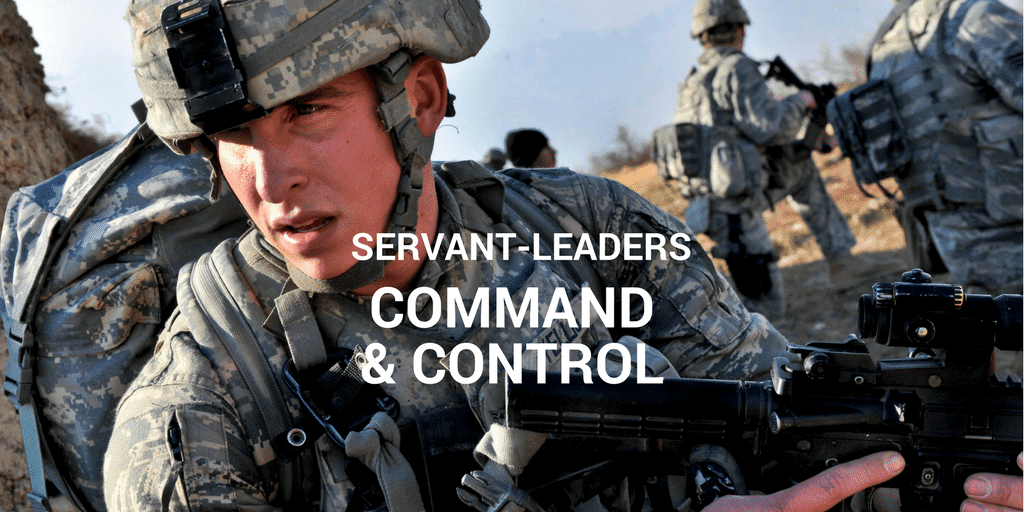“Command and control.”
I’ve found those to be three dirty words in talk about servant leadership.
Indeed, some people think servant-leaders motivate people only with persuasion and influence.
And in most cases, that’s true.
But not in all cases.
Because leadership is contextual. And there are contexts when command and control is necessary. And when necessary, good servant-leaders command and control.
Before you conclude I am a servant leadership heretic – or worse, that I’ve lost my mind – hear me out.
Command and control is a military term, precisely defined in as follows:
“The exercise of authority and direction by a properly designated commander over assigned and attached forces in the accomplishment of the mission.”*
In the military context, command and control is both necessary and proper for accomplishing a mission.
I’m quick to add that in the military context, command and control is not inconsistent with an overall embrace of servant leadership.
Indeed, the leadership development program at the United States Air Force Academy is grounded in servant leadership. The United States Marine Corps has an expression that captures its servant leadership attitude: “Officers eat last.” I know the Navy SEALS practice servant leadership. I trust the other branches of the service do as well.**
My point is that sometimes, a good servant-leader shifts to command and control mode.
I’ve seen command and control work well myself:
- When I was a young lawyer on Wall Street – During a hostile takeover by a client, the senior partner calmly and coolly directed dozens of young lawyers (including me) on what to all day – and all night.
- When I worked at CARE – When natural disasters struck – an earthquake or tsunami, for example – the emergency response team took control and the rest of us took orders.
- When I help my wife break down after a wedding – We got to get out of the wedding venue fast. I don’t know what the heck I’m doing. I need direction from someone who does.***
I’m sure you could think of similar examples from your own experience.
But I emphasize, command and control – the exercise of organizational authority – is not the primary way that servant-leaders motivate their followers. Command and control is not their first mode, default mode or preferred mode of leading.
So, I also believe that sometimes good servant-leaders do command and control, especially in the workplace.
What do you think?
Am I a servant leadership heretic? Have I lost my mind?
As always, we appreciate your views.
Thanks!
And don’t forget to download our latest ebook, Servant Leadership in the Workplace: A Brief Introduction. It’s free!
___________________________
* See United States Department of Defense Dictionary of Military and Associated Terms.
** The photo above shows U.S. airmen during a patrol (Defense.gov News Photo 110501-F-XXXXX-214, courtesy Wikimedia Commons).
*** My wife, Laura, owns a floral design business in Atlanta called Faith Flowers. She does the flower arrangements for lots of big weddings. Sometimes I help her clean up after they are over. The team has to move quickly and the whole breakdown process can be quite complex. In this particular context – though not in every aspect of our marriage – I welcome being commanded and controlled!

